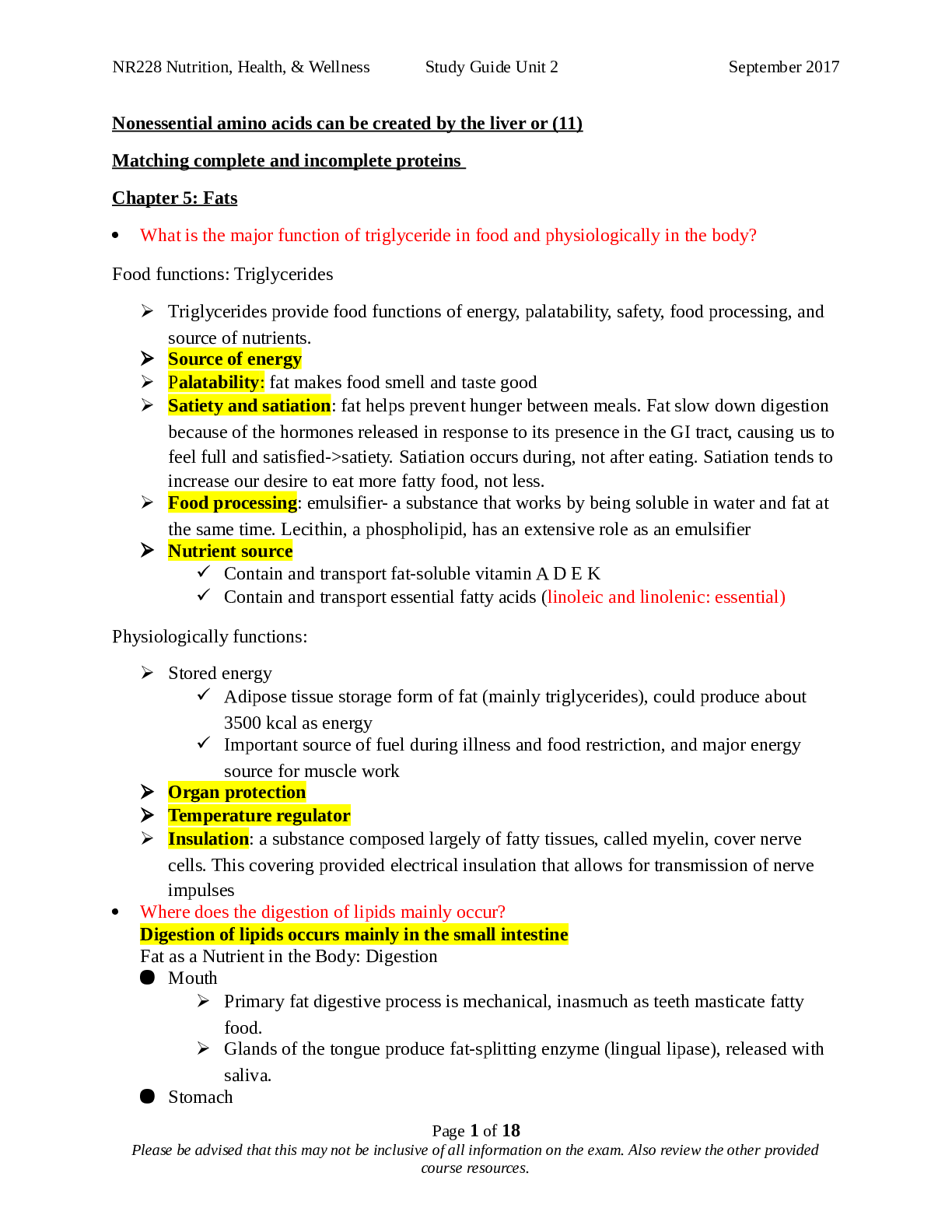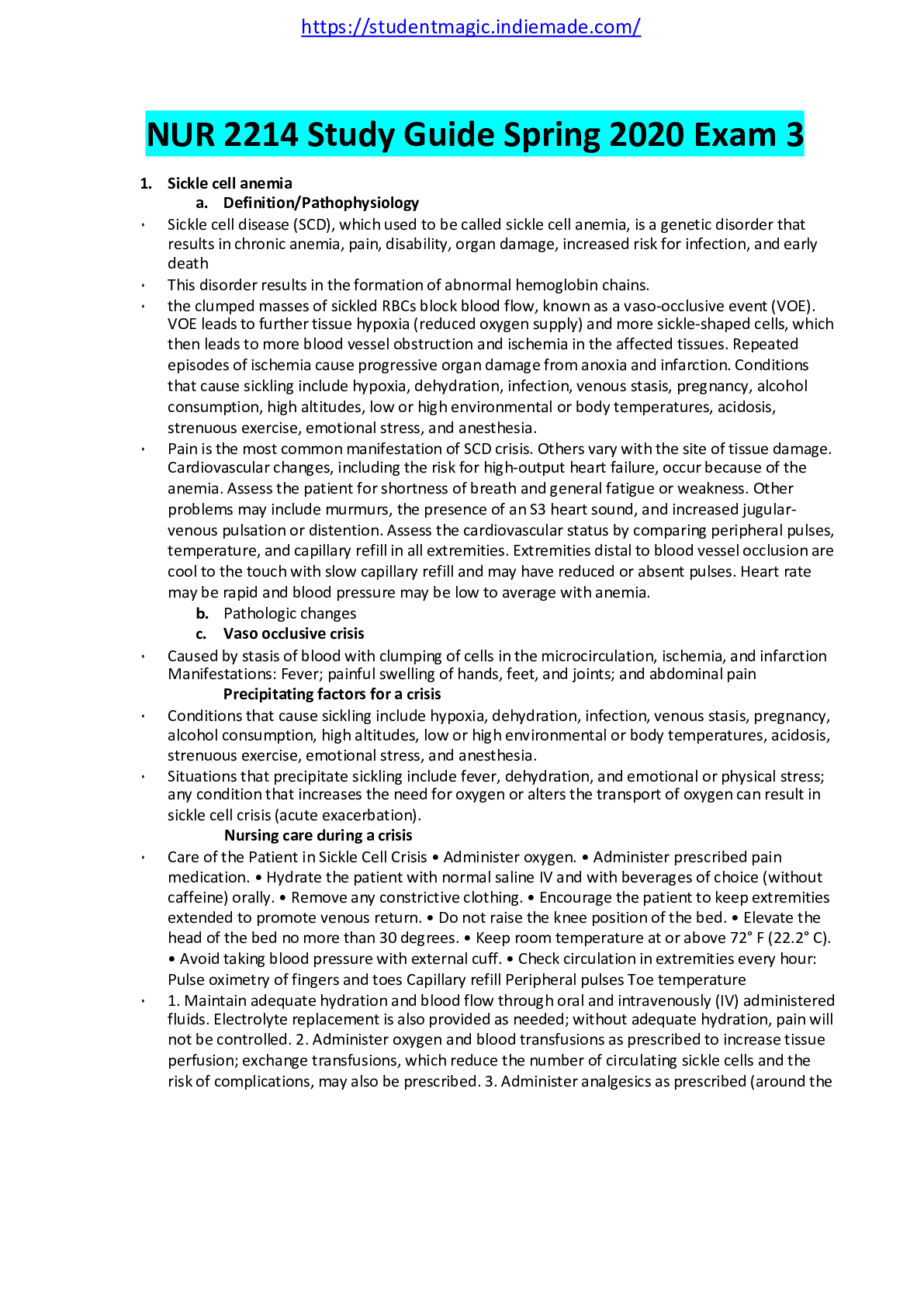BioChemistry > STUDY GUIDE > WGU C785 FINAL EXAM QUIZ GRADED A+ (All)
WGU C785 FINAL EXAM QUIZ GRADED A+
Document Content and Description Below
1. What is the basic structure of an amino acid? What do they look like?: - amino group (NH2 or NH3), carboxyl group (COO or COOH), alpha carbon (C), and variable group 2. How do you identify the 3... different types of side chains: non-polar/hydrophobic, polar, and charged?: Non-polar/hydrophobic - end with CH or "can't have" water. Polar - end with OH, SH, or NH. Charged - end with a charge 3. what kinds of bonds do each of the 3 different types of side chains make?: ionic, hydrophobic/non-polar, charged 4. What are the 4 levels of protein structure?: Primary - linear structure, Secondary - Folded into helix or pleated sheet caused by hydrogen bonding, tertiary - 3D structure caused by side chain interactions, quaternary - 1+ amino acid chains combine = multiple subunits MUST have 1+ subunit 5. What enviormental change breaks each type of bond?: hydrophobic - temperature change, ionic - salt or decreased pH, hydrogen - temperature, change in pH, disulfide - reducing agents 6. what type of amino acid side chain leads to protein aggregration?: hydrophobic bonds 7. how do environmental changes affect protein folding?: Extreme temp can cause hydrogen bonds to break apart = malformation of protein folding 8. how do mutations affect protein structure?: Can cause structure to change. Protein loses form = loses function. May form a different protein. 9. What is an electron?: Negatively charged atom on outer ring for bonding 10. What is energy:: Power derived fro chemical interaction 11. what are covalent bonds?: chemical bond, atoms share 1+ valence electrons 12. what is an ionic bond?: bond between positive and negative 13. what is a hydrogen bond?: weak bond between positive and negative 14. with an amino?: piece of amino acid, NH2 or NH3 15. what is a carboyxl?: piece of amino acid, COO or COOH 16. What is hydrophobic?: Doesn't like water, end with CH 17. what is hydrophilic?: Water Lovering, end with OH, NH, or SH 18. what is disulfide bond?: strongest bond between reduction agents, formed between SH's. WGU C785 FINAL EXAM QUIZ GRADED A+ 2 / 16 19. what are zwitterions?: amino with positive and negative charges = overall charge of zero 20. what is a polypeptide: polymer of amino acids 21. What is dehydration synthesis?: Process of forming peptide bonds 22. what is hydrolysis?: adding water to destroy bonds 23. what is an alpha helix?: twisted secondary structure, formed by hydrogen bonds 24. what is a beta sheet?: folded second structure shape, formed by hydrogen bonds 25. what is denaturation?: loss of shape duet o interruption of chemical bonds; occurs via extreme salt, temp, pH 26. what is aggregation?: clumping of inner or outer cellular proteins caused by misfolded proteins leading to diseases such as Alzheimers, ALS, Parkinson's 27. how do enzymes catalyze reactions?: bind with substrates to decrease activation energy required and decrease reaction rate 28. how do enzymes affect reaction rate and activation energy?: decrease activation energy and decrease reaction rate 29. what are the 4 steps of the enzymatic cycle?: enzyme recognizes substrate, substrate attracts the enzyme; enzyme-substrate complex is formed; enzyme-product complex formed; product is released, enzyme recycled 30. how do environmental changes affect enzymes?: High heat, pH change, high salt concentration, and reducing agents can cause an enzyme to lose its form/lose function 31. what is a competitive inhibitor?: Mimics substrate and takes its place on the active binding site 32. what is a noncompetitive inhibitor?: Binds to allosteric site causing active site to change shape = preventing substrate from binding with enzyme 33. what molecules increase/build up or decrease given a specific inhibitor? A -> (enzyme 1) -> B -> (enzyme 2) -> C -> (enzyme 3) -> D. Pretend Enzyme 2 is inhibited.: Inhibitor would cause a build up for product B, decrease product C. Enzyme 3 and product D would not be created. 34. what is substrate?: the substance on which an enzyme acts 35. what is a product?: result of a reaction WGU C785 FINAL EXAM QUIZ GRADED A+ 3 / 16 36. what is an intermediate?: products produced in an enzyme pathway before final product 37. what is an active site?: location where substrate binds with enzyme 38. what is enzyme specificity?: Enzymes bind with certain substrate or type of substrate to create a certain reaction 39. what is induced fit?: Enzyme changes shape in enzyme-substrate complex to facilitate formation of enzyme-product complex 40. what is kinase?: Enzyme, adds phosphate group via phosphorlation 41. what is phosphatase?: enzyme, removes phosphate group via dephosphorylation 42. with is an allosteric site?: secondary site on an enzyme an inhibitor binds to via non-competitive inhibition 43. what is competitive inhibition?: enzyme substrate and inhibitor complex compete to bind with enzyme's active site. no product formed when inhibitor binds with enzyme. 44. what is non-competitive inhibition?: inhibitor binds to allosteric site, not active site. Changes shape of active site, preventing substrate from binding and making product 45. what is feedback inhibition?: End product sends feedback to beginning of enzyme pathway inhibiting 1st enzyme via noncompetitive inhibition 46. what nucleotides/bases are used in DNA? what are their abbreviations/full names?: C - cytosine, G - guanine, A - adenine, T - thyamine 47. what nucleotides/bases are used in RNA?: C - cytosine, G - guanine, U - uracil, A - adenine 48. which nucleotides base-pair together in DNA?: T-A, G-C 49. which nucleotides base-pair together in RNA?: U-A, G-C 50. how to we make complementary DNA? (i.e. coding to temple et reverse)- : Taking coding DNA, write in reverse, then pair them up to make template. Template DNA, write in reverse, then pair up to make coding 51. how do we make mRNA?: template DNA to mRNA by switching back and forth OR coding DNA to mRNA by switching out T's for U's 52. which strand of DNA is complementary to mRNA?: Template DNA WGU C785 FINAL EXAM QUIZ GRADED A+ 4 / 16 53. how do we make protein?: DNA -> RNA -> Protein 54. which type of nucleotide sequence is used and in which direction?: RNA is used 5' to 3' 55. what is the relationship between mRNA and tRNA?: tRNA is complementary to mRNA 56. how does mRNA splicing allow use to create multiple proteins from a single gene/mRNA?: Alternative splicing allows for all [Show More]
Last updated: 1 year ago
Preview 1 out of 16 pages
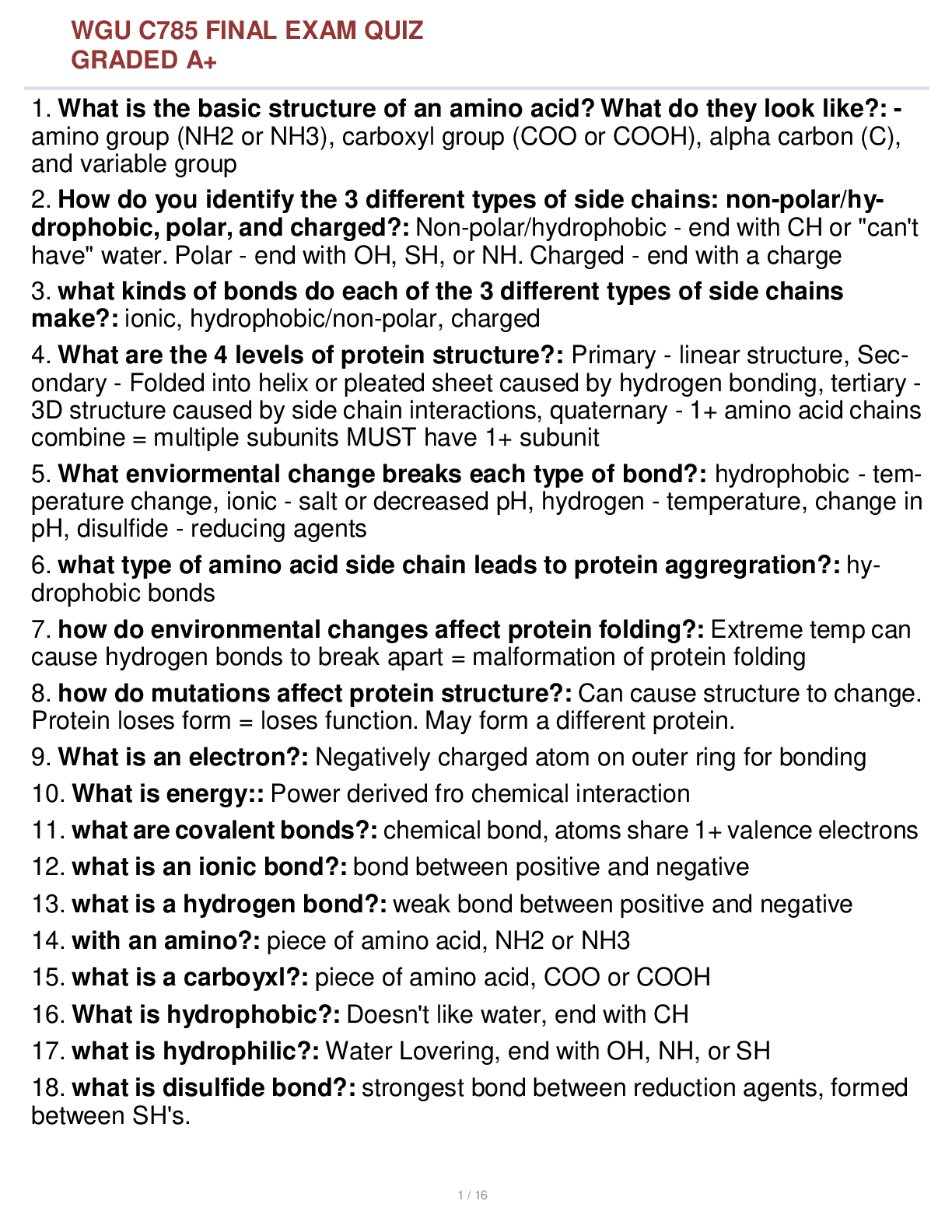
Reviews( 0 )
Document information
Connected school, study & course
About the document
Uploaded On
Jul 28, 2022
Number of pages
16
Written in
Additional information
This document has been written for:
Uploaded
Jul 28, 2022
Downloads
0
Views
50

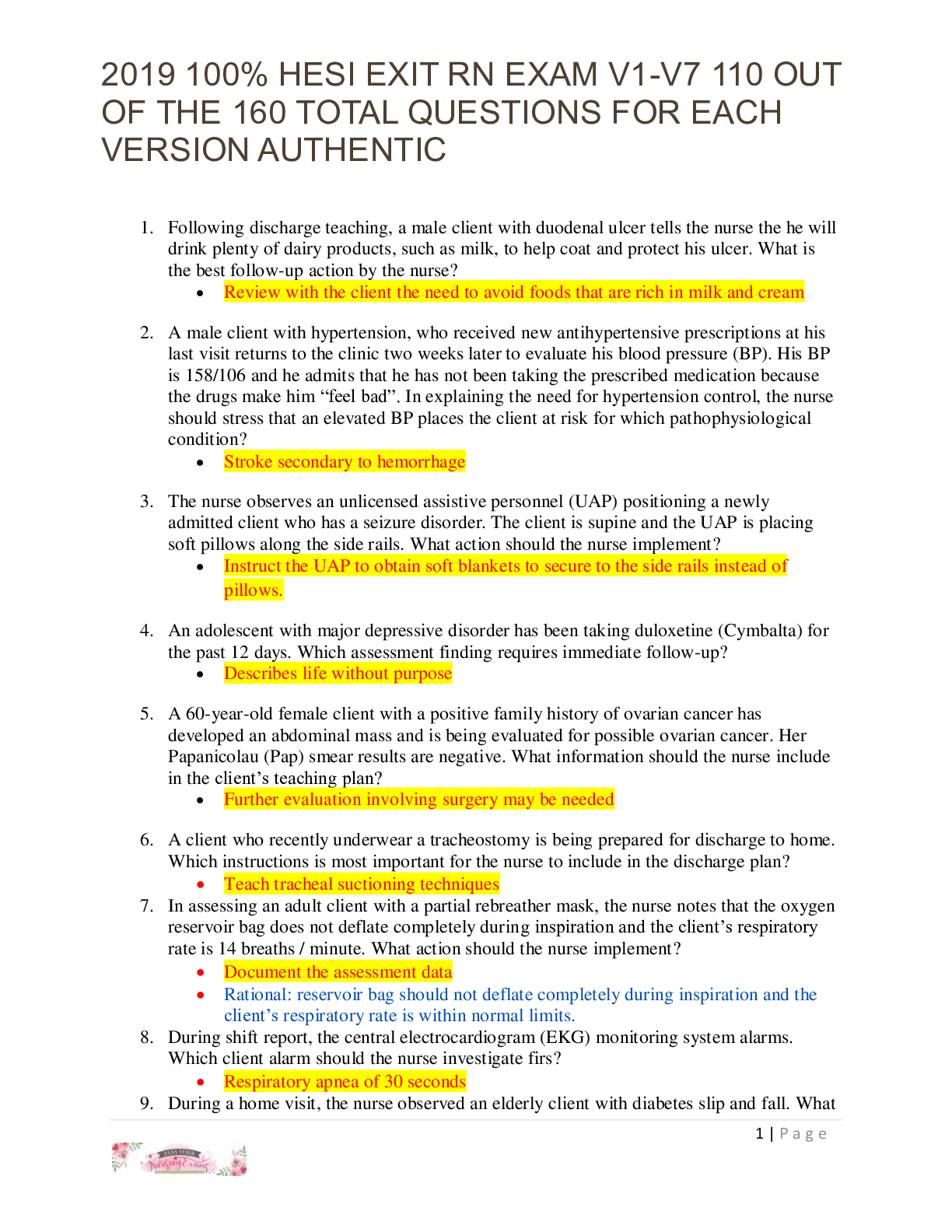

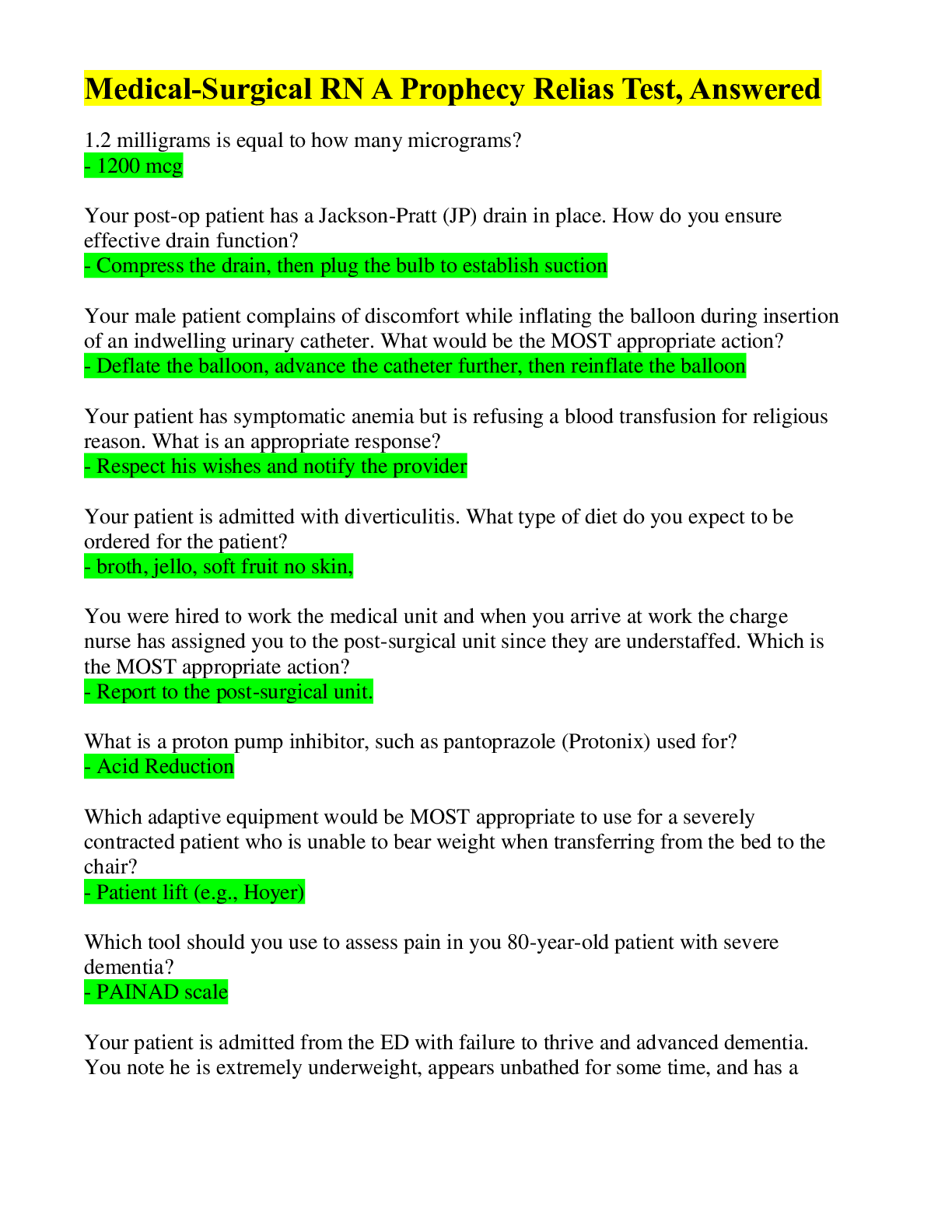
.png)

.png)

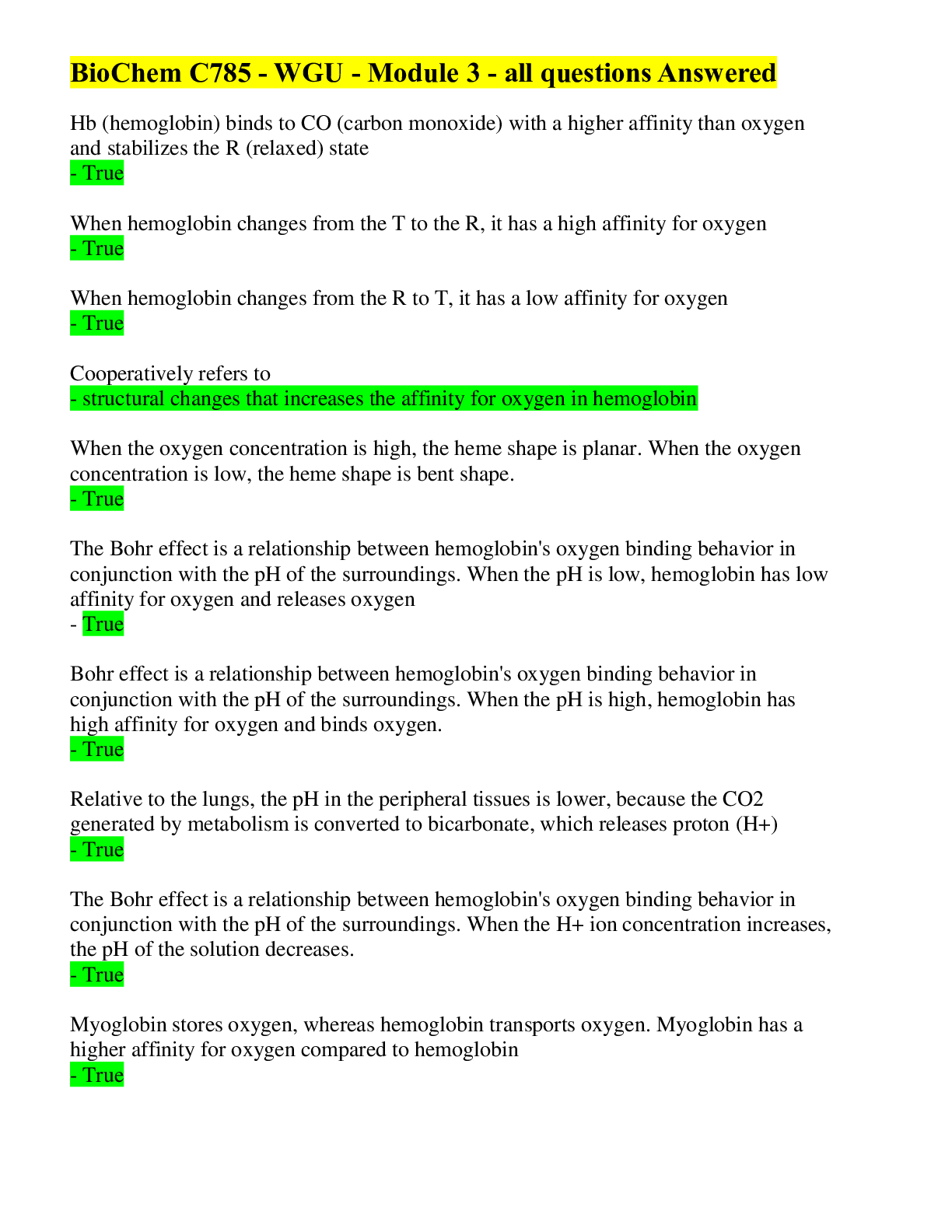

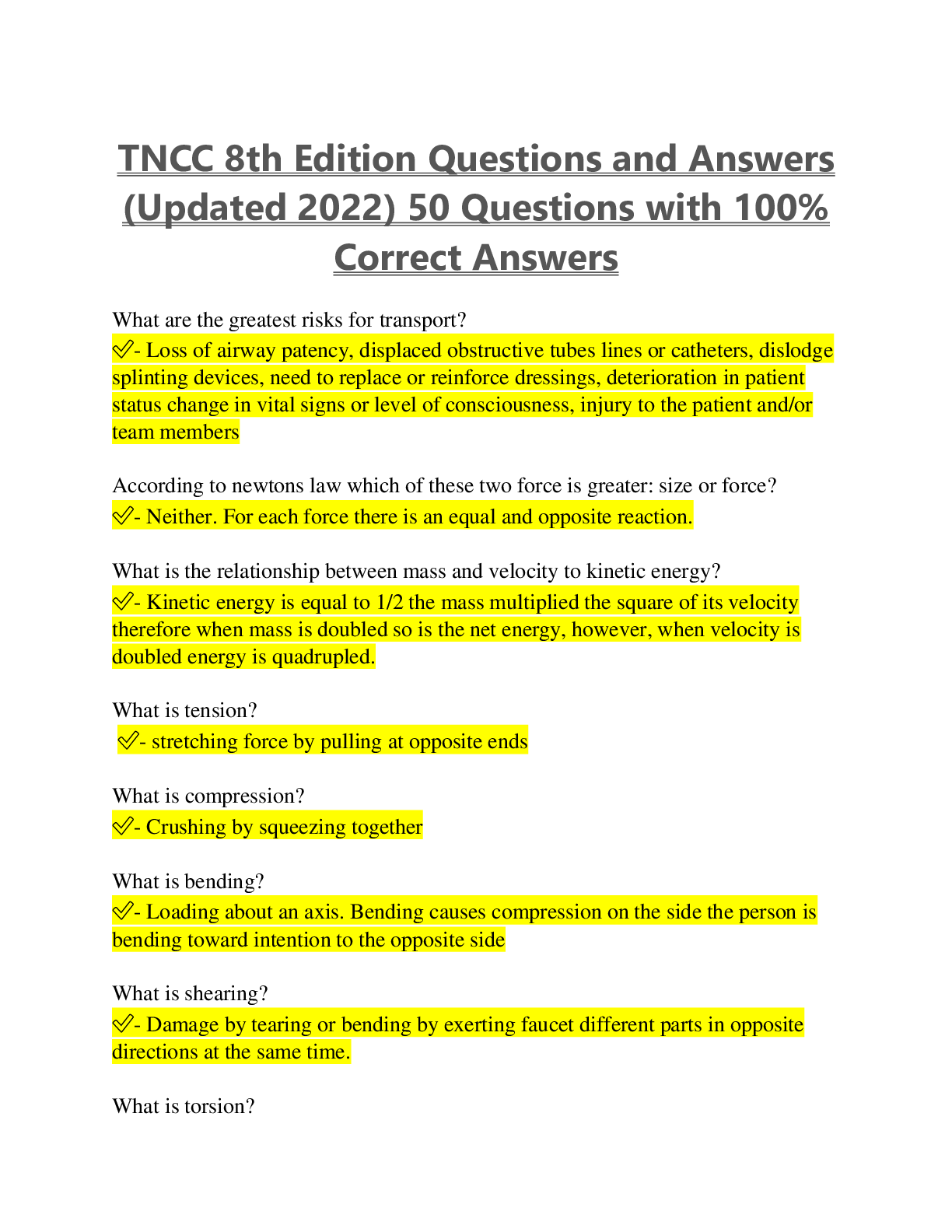
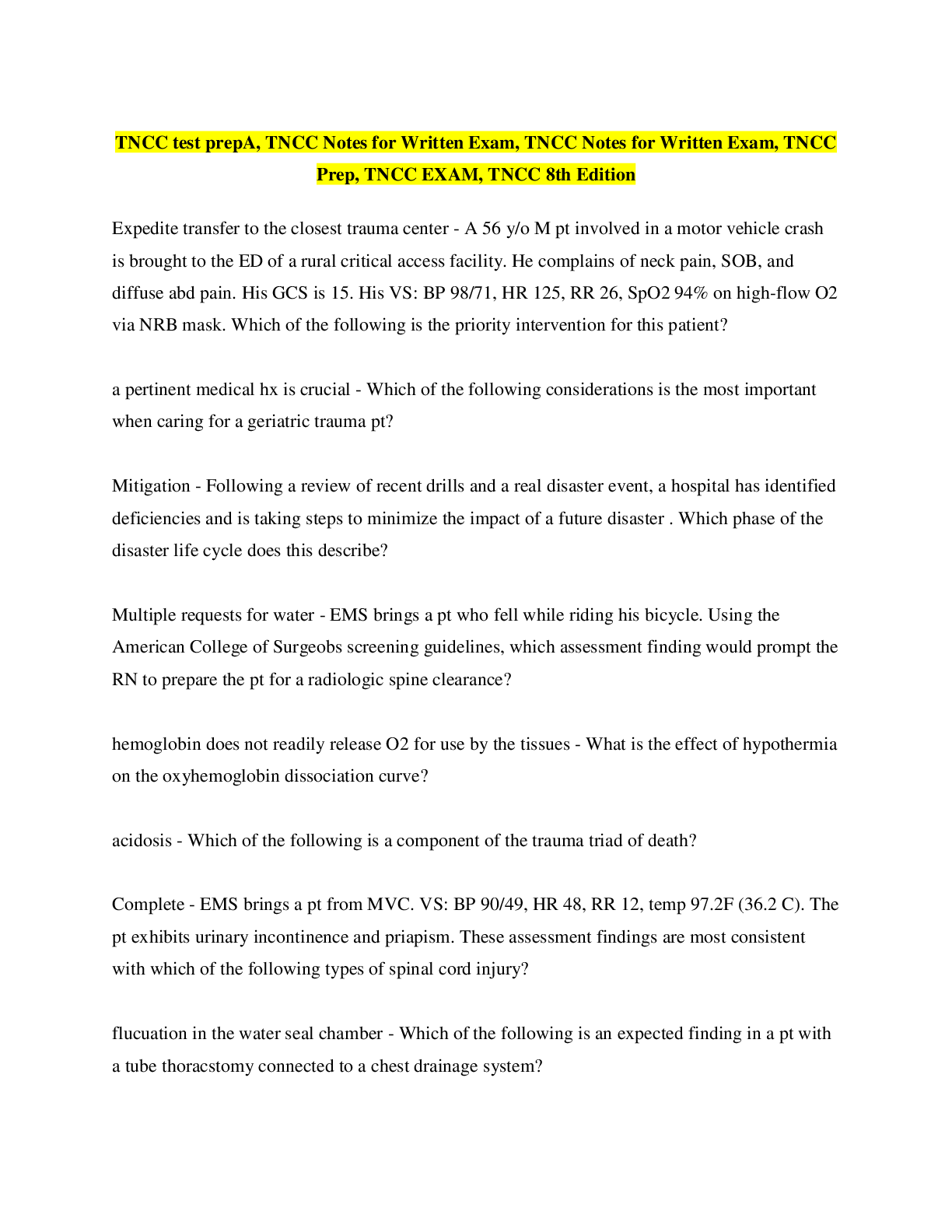
.png)
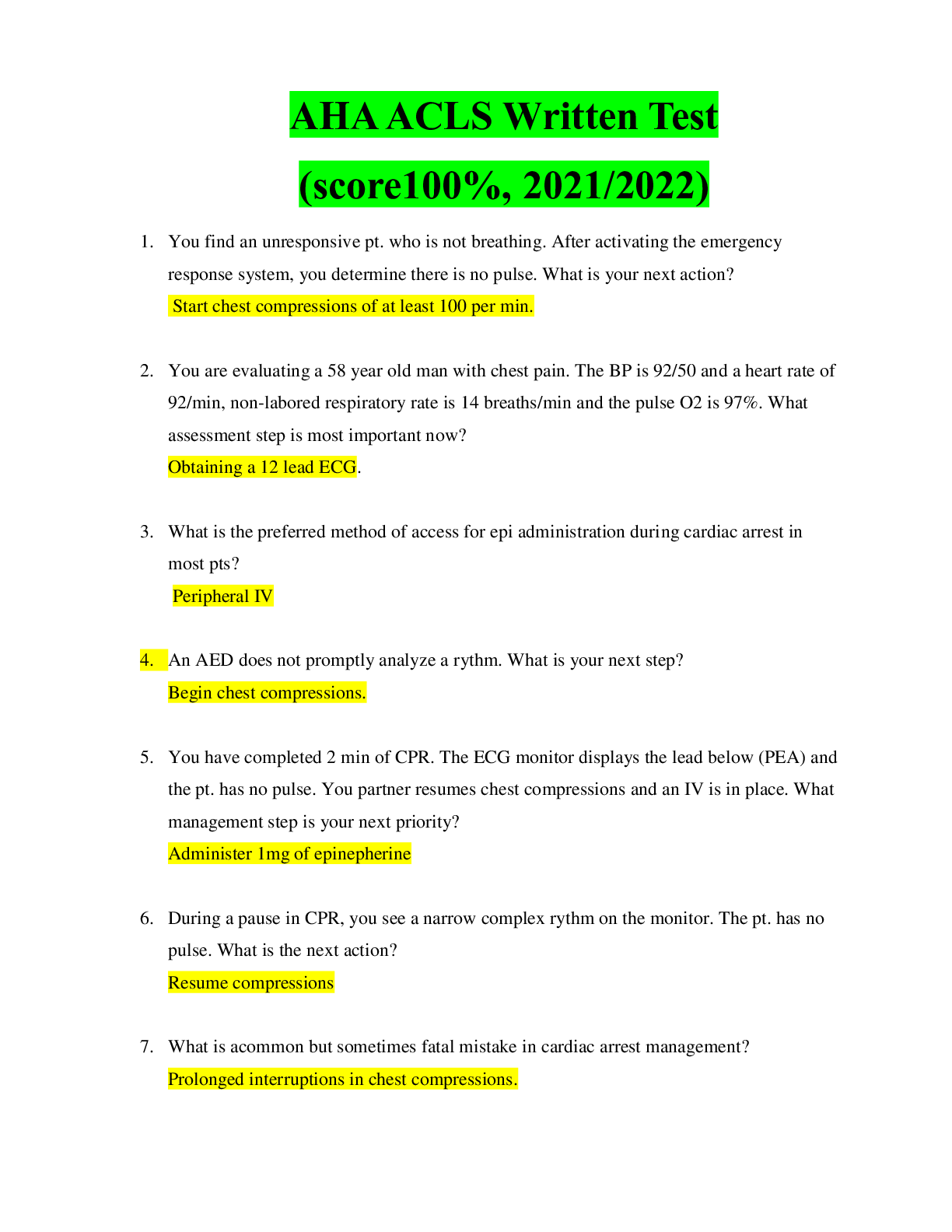
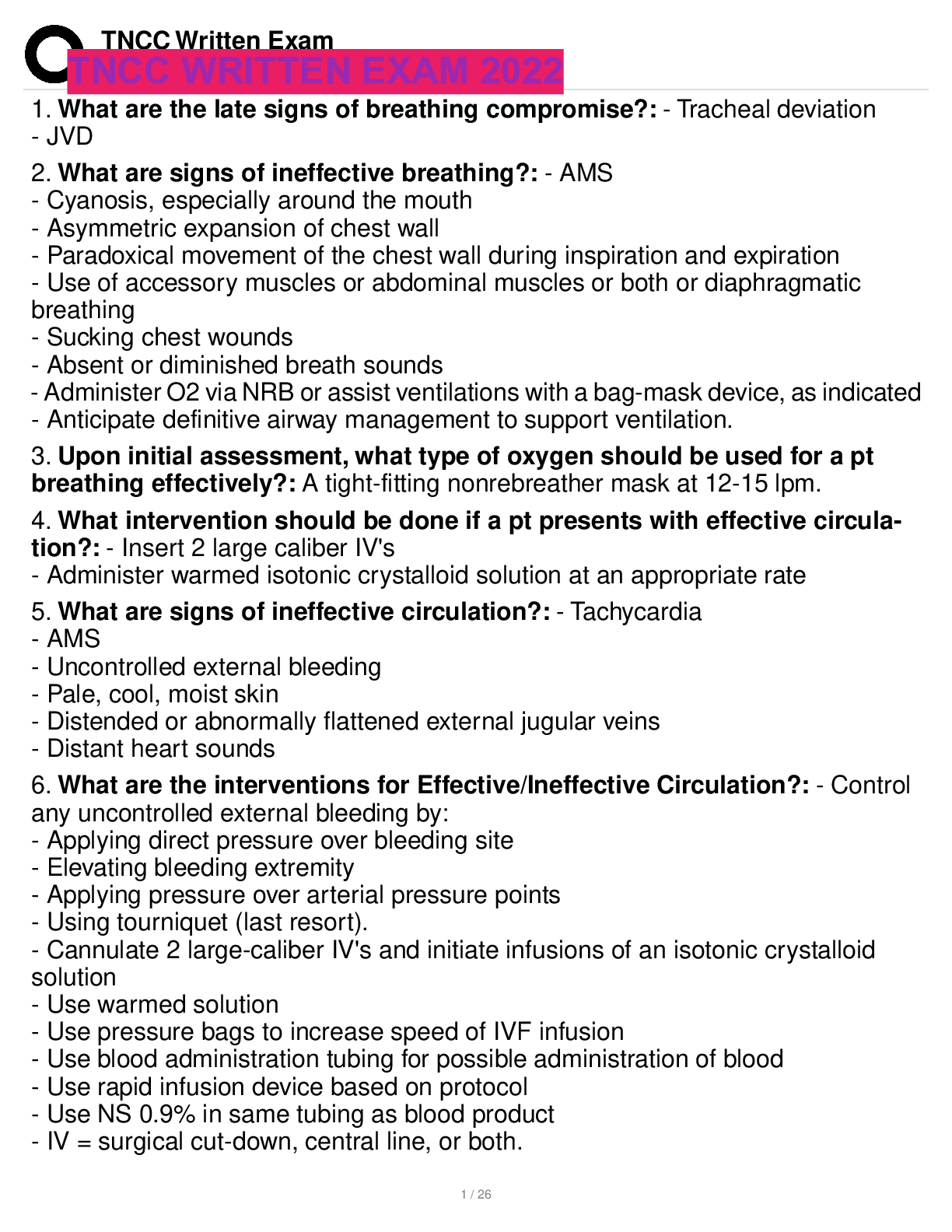







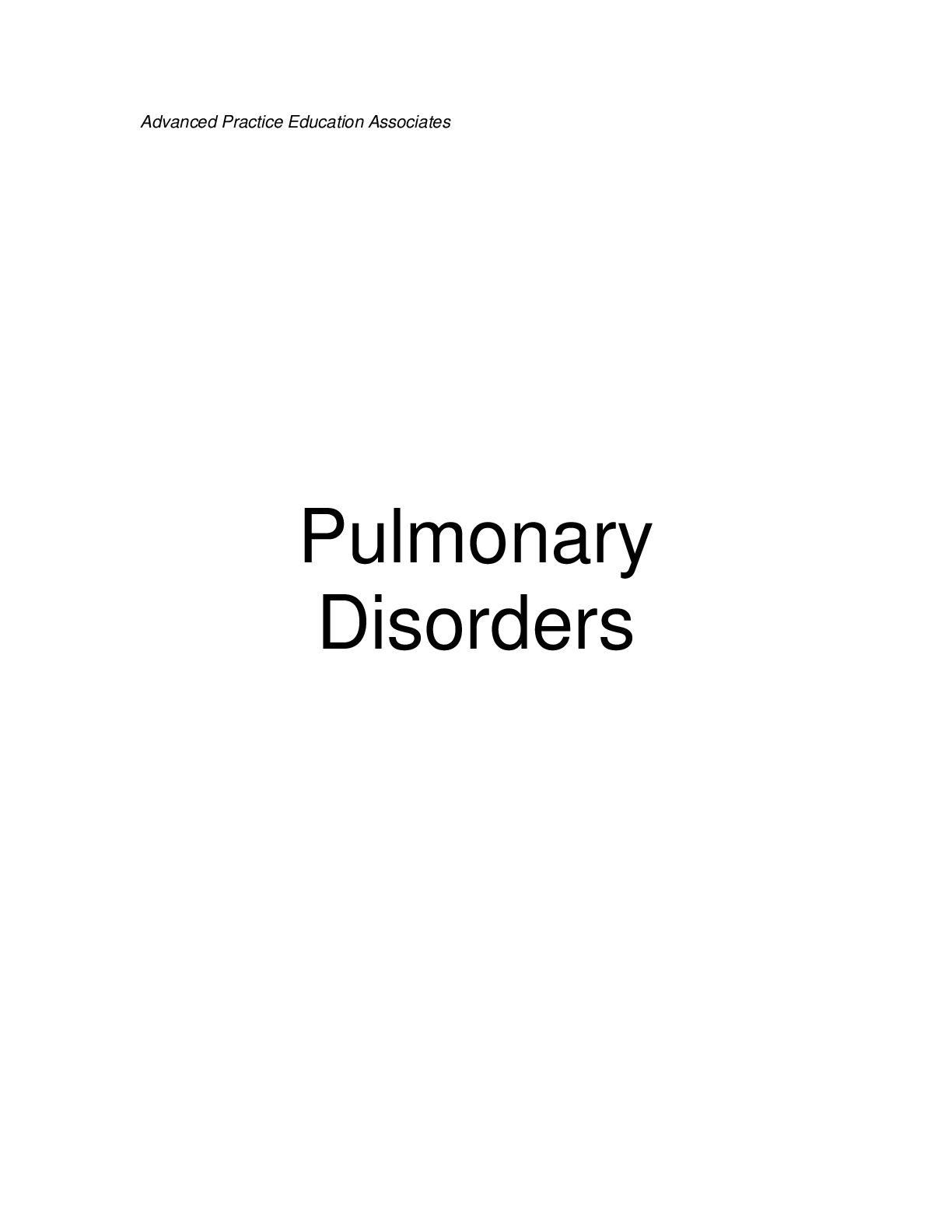
.png)





